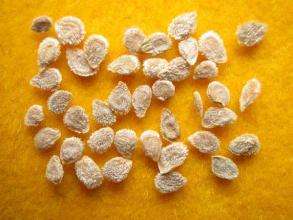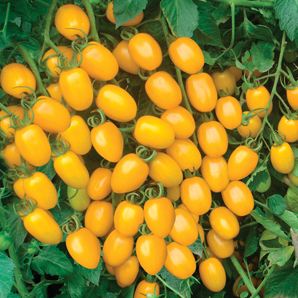鹌鹑Efficient farming technology
--- And answer the readers of Shijiazhuang, Baoding and other places. Recently, readers from Shijiazhuang, Baoding and other places came to us and asked questions about the technology of quail breeding. To this end, we have published this article in the hope that we will do the following seven tasks in the light of the actual situation in the region and our own, and ultimately achieve a continuous increase in aquaculture benefits. ---editor Breeding quail is a small-scale breeding industry with quick investment, but it needs to pay attention to scientific breeding methods. First, the building cage Cage breeding method is effective, can take bamboo and wood structure, cage length 80 cm, width 50 cm, height 30 cm, stratified feeding. The cages should be housed in quiet and ventilated, sunny, well-lighted and insulated houses, pay attention to regulating temperature, keep cool in winter and cool in summer, and strictly control the access of livestock and poultry (dogs, cats, chickens, etc.) or artificial harassment. The breeding density is calculated as a single layer in cages, and 100 to 150 or 100 adult pods per square meter can be raised. The trough should be equipped with a drinking trough and a drinking fountain; the lighting equipment must be installed and the light intensity must be provided at night to increase the egg production rate of the female foal. Second, with a good feed As far as possible, feedstuffs for quail use less fiber and nutritious foods, and varieties should be diversified. To maintain a certain protein, good palatability, can not be arbitrarily changed, to prevent food loss, affecting production. The general feed formula is: corn 50%, bean cake 8%, rapeseed cake 3.7%, wheat bran 29%, fishmeal 6%, rough 1.5%, bone meal 1.5%, salt 0.3%, but also add some vitamins, antibiotics and Trace elements and so on. Third, daily management 1 It is necessary to sweep the cage and remove the excrement (to remove the excrement once a day, at least once every two days) to prevent moisture and pollution. Wash the tank equipment frequently and keep it dry and hygienic. 20 to 4 days of age often show the wildness of escape, feeding, feeding water to be careful, to prevent feed from being splashed by splashing, to prevent drinking water wet villi. The baskets can be basketed for 40 days to meet the cage culture environment during the production of eggs. In the summer, it is necessary to maintain good ventilation and prevent the heat from cooling. In the winter, stoves should be used to keep the temperature above 16°C. 4 There should be sufficient light during the production period, and it can be supplemented with light for about 4 hours after dark. Female eggs are usually laid between 2 and 4 pm and ended at 6 pm. Always lay eggs to prevent trampling and smashing. 5 Be diligent in checking and adjusting the indoor temperature, humidity, ventilation, light, and to prevent all kinds of stress, delirium, rodent, animal damage and gas poisoning. 6 Regularly weigh and examine feather growth, and make all records and statistical reports. Fourth, breeding breeding Spring breeding is from March to May. In the fall from September to November, the male and female cockroaches are paired with 1:4. Generally, one female cockroach is bred each day for every male cockroach. If too much mating occurs, the fertilization rate of the eggs will be affected. When you breed, you will place the male cricket in the cage of your mother's cockroach and mate with you. V. Grab the brooding The quail eggs only hatch in 17 days. Newly hatched chicks have poor adaptability to the external environment and should pay attention to insulation. 1 to 2 days after hatching, the temperature of the cage should be kept at 35-38°C to accelerate the absorption of the egg yolk in the abdomen and the umbilicus should be well received. After the daily cooling down 0.5 °C, has been maintained at a constant temperature down to about 25 °C, in addition to timely feeding to the eel. One day after hatching, steamed egg yolks and shredded corn were fed. One week later, the mixed feed was fed and fed 5 to 6 times a day (including 2 nights). The feed should be mixed with wet, hand-knead into a group but loose enough, but also should be fed some cold water. General mature for 50 days, began to lay eggs. 6. Forced moulting If the second laying cycle is used, artificial forced moulting is required. The implementation method is: stop the material for 4 to 7 days and darken, forcing the production quail to stop production immediately, then dropping the feathers, and then gradually feeding to make it recover quickly. It takes only 20 days from the end of the feed to the restoration of production. The diseased and weak individuals must be eliminated and drinking water must not be interrupted. VII. Disease Prevention 1 Gastroenteritis. If diarrhoea, weakness, coma, etc. are caused by moldy feed or improper feeding, you can mix in furazolidone or charcoal in the feed for 3 days, stop for 2 days, feed 1 or 2 times, or mix oxytetracycline in the feed. , feed for 5 days. Sulfamidazole or sulfamethazine can also be used to feed the feed twice a day, and even fed 5 to 6 days. 2 daytime. Caused by salmonella caused by food, row of white foul-smelling dilute feces, etc., can be fed in the feed and mix with furazolidone for 3 days, stop feeding for 2 days and then feed for 3 days until the feces is normally stopped. Add oxytetracycline to the feed and feed it for 6 days, or mix it with sulfadiazine 0.5% of the feed and feed it for 3 days, stop for 2 days and feed for 3 days. 3 rectal prostitution and dystocia. Due to malnutrition caused by premature delivery or egg production, the prevention and control methods maintain a comprehensive feed nutrition, prevent overgrowth and prevent fallopian tube disease. Difficulties should be hand gently press the abdomen to help lay eggs. For rectal prolapse, the anorectal rectum is rinsed with 0.1% potassium permanganate solution and gently returned to the body.
Yellow Cherry Tomato
Yellow cherry tomato red cherry tomato is a variation on color, also known as grape yellow cherry tomato tomatoes and tomatoes, cherry tomatoes, pearl in foreign countries have "small kingo", "love".It is both a vegetable and fruit, not only the color is gorgeous, beautiful shape, and taste and rich nutrition, besides containing tomatoes all the camp A composition, its vitamin content is higher than the ordinary tomato.Promoted by the United Nations food and agriculture organization (fao) a priority of one of the "four big fruit".Tomatoes is a kind of heat with crops, fruit about 1 ~ 3 cm in diam., red blue, taste sweet, soft, good taste, high nutritional value.
Yellow Cherry Tomato Seeds,Cherry Tomato Seeds,Hybrid Tomato Seeds,Small Cherry Tomato Seeds Ningxia Bornstein Import & Export Co., Ltd , https://www.bornstein-agriculture.com
